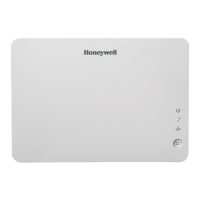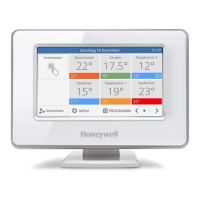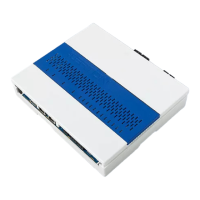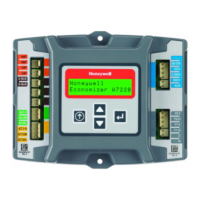ENGINEERING CMANUAL OF AUTOMATION CONTROL
AIR HANDLING SYSTEM CONTROL APPLICATIONS
204
2) Providing means of loading and unloading a
compressor under light load.
3) Sizing the refrigeration equipment
accurately.
4) Providing minimum on and off time delays.
5) Providing a hot gas bypass.
5. CONSIDER SEPARATE MECHANICAL SYSTEMS
FOR AREAS IF THEIR HEATING OR COOLING
LOADS DIFFER GREATLY FROM THE OTHER
AREAS.
6. ELIMINATE STRATIFICATION IN THE DUCTS.
a. Use mixing chambers or other mechanical
devices where mixing is critical.
b. Use the system fan to mix the air. A single inlet
fan mixes air more effectively than a double
inlet fan.
c. Arrange steam coils so that the supply header is
on the longest dimension if possible.
NOTE: No one of these methods provides a
complete answer to the stratification
problem. They should be used in
combination where needed.
7. PROVIDE PHYSICAL ARRANGEMENT OF
SYSTEM COMPONENTS TO PERMIT SUITABLE
LOCATION OF SENSING ELEMENTS.
a. Furnish sufficient spacing between coils to
permit installation of sensing elements.
b. Provide ductwork downstream from a coil or
other components to allow placement of the
sensing element in an unstratified mixture of
exiting air.
8. PROPERLY LOCATE THE SENSING ELEMENT.
a. Locate sensing elements where they will
measure the variables they are intended to
control.
b. Locate space sensing elements on an interior
wall where they can measure a condition
representative of the whole space.
NOTE: Space sensing elements can sometimes
be located in the RA duct as close to
the space as possible if another suitable
location cannot be found.
c. Locate duct sensing elements in an unstratified
air mixture.
d. Locate air pressure and flow pick-up elements
away from immediate fan discharges and
provide with capacity tanks where necessary to
eliminate surges and pulsations.
REQUIREMENTS FOR EFFECTIVE CONTROL
Effective control system performance requires careful design
of the mechanical system and selection of components.
Consideration needs to be given to the following by the
mechanical system designer and the control engineer:
1. PROPERLY DESIGN DISTRIBUTION SYSTEM TO
DELIVER AIR TO THE SPACE.
a. Extend ductwork to all parts of the space.
b. Insulate ductwork if it runs through a space
where the temperature is considerably different
from that of the air within the duct or if the
space dew point is likely to be above the supply
air temperature.
c. Locate outlets only where the air in the duct is
well mixed.
d. Locate RA grilles where they will aid in
distribution and eliminate short circuiting of the
supply air.
2. PROPERLY SELECT DIFFUSERS AT OUTLETS TO
THE SPACE.
a. Do not have low ceiling diffusers blow directly
downward.
b. Use several small diffusers rather than one large
one.
3. PROPERLY SIZE AND SELECT HEATING COILS.
a. Size coils to meet their maximum loads. Avoid
oversized coils for best control.
b. Use multiple inline coils where the required
temperature rise is high.
c. Select coils for even distribution of the heating
medium at light loads to prevent surface
temperature gradients and accompanying
stratification.
d. Furnish preheat coils with a maximum
temperature rise of 30 to 35 degrees.
e. Provided multiple low-temperature controls to
protect large coils. Provide one for every twenty
square feet of coil face area with the element
location favoring where cold air is more likely to
be.
4. PROPERLY SIZE AND SELECT COOLING AND
REFRIGERATION EQUIPMENT.
a. Consider dividing the cooling capacity among
several coils.
b. Consider some form of reheat if
dehumidification is required.
c. Prevent short cycling of compressors under light
load by:
1) Installing multiple compressors where large
capacity sequencing is needed.

